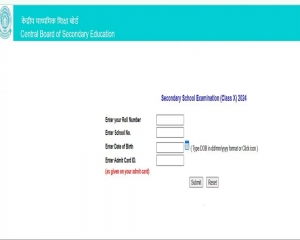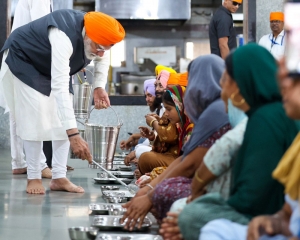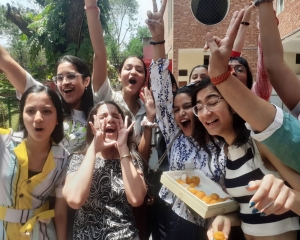Nanda Devi Raaj Jat, the largest processional festival in Uttarakhand hills, is to begin on August 28 this year in District Chamoli. The pilgrimage will last for 18 days. Earlier, the Jaat was held in 2000. The astrological calculations delayed the Jaat this time by one year. The Jaat is celebrated in a procession negotiating 280 kilometer, three-fourth distance on foot and one fourth by vehicles.
Nearly 100 kilometers are traversed across high Himalaya. The highest point being 'Jyuragali' at nearly 17,500 feet above mean sea level.
Although more than 50 Jaat or processional festivals take place across Uttarakhand Hills during the closure of monsoons, yet the crowd that is drawn by the Raj Jaat is tremendous. This is christened as Raj Jaat because once a Pawar king of Chandpurgarhi fortess (near Adibadri) not only participated in it but also laid a tradition of holding it after every 12 year. At later period when the king shifted to Dewalgarh and then to Srinagar, the Pawar kings of Garhwal became reluctant to participate and their junior branch called 'Kunwar' came forward to maintain the tradition. The tradition, with the support of the modern of communication thrived so much as the original jaat, to which the king had lent grandeur once, has almost gone to the oblivion and now hardly any pilgrim knows that the originating point of this Jaat is Kurud, a village in Ghaat Block. The original Jaat that began from Kurud from antiquities lost its grandeur and gaiety gradually as it got lost in the clamour of the princely patronage that the stream of the Jaat received in the later times. The Jaat from Kurud has been an annual feature and it terminates at Bednikun, 40 kilometer short of Homkund, the terminus of the Raj Jat.
It's a paradox with the Raj Jat that it has been subjected to interpolations so much as one is unable to see the actual path to go. In fact, Nanda is a local deity. It is worshipped in Garhwal and Kumaon both equally. Even the Bhotia community, which had ample influence of Buddhism, also worship this deity from times immemorial. Some scholars believe that Nanda has been a deity of Khasas as it finds no mention in the Brahminical scriptures. The recent practice of amalgamating it with the Brahminical goddesses, Parvati or Shailputri is result of the age old practice of mainstreaming of the local deities into Hinduism.
But this is also a truth that when we compare Nanda of local legends with Parwati of the Brahminical scriptures, we find sea difference between the two.
According to the Brahminical scriptures, Parvati performs arduous penance to get Mahadev or Shiva as her husband, whereas in local legends, she does not like her husband who lives in extremely cold climate and is an addict of marijuana.
She wants to stay back at her mother's house which is rich in all respect. She is also envious of her childhood-friend 'Balampha' who had been married to some king called Jasdhawal of Kannauj.
One salient feature of Nanda Raj Jaat is, it is led by a four horned ram. The locals consider Nanda as their own daughter and dispatch the ram with gifts including fruits and cereals to the high Himalayan peak Nanda Devi where Nanda is supposed to live and where only the ram can reach. Some scholars find Nanda peak as synonym of the Sumeru which finds mention in Sanskrit scriptures.
The Raj Jaat that begins from villages near Chandpurgarhi, reaches Wan village in 13 days. Wan is the last village beyond which there is no human habitation. There is a temple of latu in this village. latu is brother of Nanda Devi. latu is also a local deity who has a number of legends about him. From here, latu leads the procession. The Annual Jaat from Kurud and its Raj Jaat stream coming from Chandpurgarh converge at either Chefdyun or Faldiya village, and thus move together towards Wan.
The Jaat coming from Kurud reaches there from Kurud with the festiv idol of Nanda Devi in a palanquin. With the Raj Jaat branch, there use to be no idol, it comes with the 'chhantoli' or umprella only. Chhantoli is a parasol made up of 'ringal'or shrubby bamboo woven with birch bark and decorated with clothes, predominantly of red colour. This is sufficient to testify that the main branch of the Jaat is the one that originates from Kurud.
Now the organizers of the Raj Jat have tried to correct the tradition by declaring Kurud also a halting point.
This is also a fact that a sizeable local population has been of the opinion that during the last two Raj Jaats, which took place in 1987 and in the year 2000, tampering was made with the traditional route and the halting points of the Raj Jaat. They say that some vested interests deliberately bypassed Adibadri, the shrine at a distance of 2 kilometer from Chandpurgarh Fort where the King paid his oblation and even the Fort which lent the name ' Raj Jaat' to this stream of Jaat, has been undermined by removing it from the list of halting points.
To put the procession on the traditional track, dozens of villages around Chandpurgarh Fort staged dharna and even observed Chakkajam at Chandpurgarhi a few days ago. They presented their representation to the District Administration and also held Press Conferences. Noted octogenarian social worker, Shambhu Prasad Nawani has been spearheading the movement with a slogan, 'Stop Twisting the Tradition'.
But tampering with the traditions is not the only issue. Safety of the pilgrims too is the one. From Wan village the real trekking begins.
The pilgrims have to traverse through 17,500 feet high 'Jyura gali' that means 'Gully of Death' . The ascend to and descend from this gully is vertical. The fragility of this area suggests least movement at this height. In last Raj Jat, 6 thousand pilgrims had reached the terminus 'Homkund'. But this time, besides the Print and the Electronic Media, New Media also have come with its popular social sites. These developments are likely to create a hype and one should not be surprised if more than 25 thousand people try to go beyond Wan village this time. If it goes uninterrupted, the damage to the flora and fauna is not the only cause of concern, one has to be worried about the human well being also. In last Raj Jat, 2 pilgrims lost their lives and more than a hundred received injuries. In fact, the crowd was beyond the bearing capacity of that fragile area 13 years ago. According to Atkinson's 'Hmalayan Gazetteer' and the Walton's 'Gazetteer of Garhwal Himalaya' the number of pilgrims those reached Homkund in Raj Jat, remained nearly 50 till the end of nineteenth century. About six hundred years ago, more than a hundred people tried to reach Homkund but were killed by avalanche triggered by a storm. The skeletons of them are still visible at Rupkund nearly 5 kilometer short of the Homkund. Still the topography is the same and the weather too as inclement and unpredictable.
A stampede can turn into a catastrophe. Cant's we the media people vow not to subscribe any effort of creating a hype to make this Jaat or pilgrimage a ‘Mahakumbh’ or so.
(The writer is a journalist and an authority on literature and culture of Uttarakhand)

























